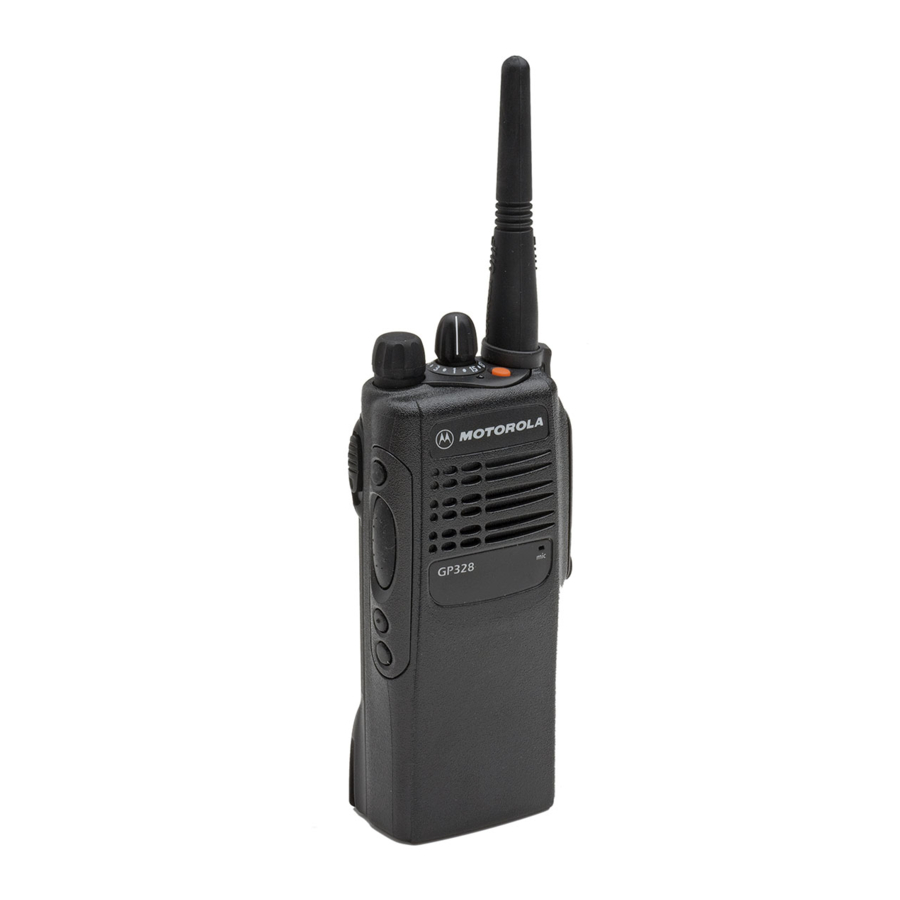Motorola GP328 Kartu Referensi Cepat - Halaman 17
Jelajahi secara online atau unduh pdf Kartu Referensi Cepat untuk Radio Dua Arah Motorola GP328. Motorola GP328 23 halaman. Professional two-way radio
Juga untuk Motorola GP328: Spesifikasi (2 halaman), Spesifikasi (4 halaman), Panduan Pengoperasian (1 halaman), Panduan Pengguna (30 halaman)

RADIO CALL INFORMATION
EMERGENCY ALARMS
Your radio can be programmed to emit one of
the two emergency alarms described below:
¥ MDC Emergency Alarm (only if the signalling
system you are on is MDC), and
¥ Emergency Siren
The MDC Emergency Alarm feature gives you
a one-button quick access to call a particular
radio or center (predeÞned by your dealer) in
emergency situations. When activated, the radio
goes into an Emergency state, which can be
programmed to
¥ continually give visual and audio feedback,
¥ give no audio feedback, but with visual feed-
back, or
¥ give no audio/visual feedback, but the radio
can receive and transmit.
The Emergency Siren will cause the radio to
sound a repetitive tone at the maximum volume.
1. Press and release the Emergency button to ini-
tiate an Emergency Alarm.
2. Press and hold the Emergency button to can-
cel the Emergency Alarm.
3. Press and release the Emergency button to
restart the Emergency sequence.
TALKAROUND
In your communications network, you may be
using a repeater to cover a larger area than what
is possible with your radio. However, you can
communicate with another radio within your
radioÕs range without going through the repeater
by using the Talkaround feature. This is
especially useful when the repeater is down.
Press the programmed Repeater/Talkaround
button to toggle between the options of making
or not making a call through the repeater. A
positive indicator tone indicates that the radio is
in talkaround mode, while a negative indicator
tone indicates that the radio is in repeater mode.
SQUELCH
If a particular channel receives many unwanted
calls coming from radios that do not belong to
your communications group and are some
distance away, or the Òbackground noiseÓ is
excessive, you can try to Þlter these
transmissions out by tightening the channelÕs
squelch. However, tightening squelch could
cause calls from members of your
Radio Call Information
13
English
